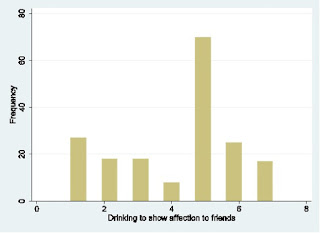This is the text to use:
chi squared = \cmin
df = \df
p = \p
RMR = \rmr
GFI = \gfi
RMSEA = \rmsea

 This is the complete list:
\cmin
This is the complete list:
\cmin is a "text macro", a code that Amos fills in with the minimum value of the discrepancy function,
C (see
Appendix B), once the minimum value is known. Similarly,
\df is a text macro that Amos fills in with the number of degrees of freedom for testing the model and
\p is a text macro that Amos fills in with the "p value" for testing the null hypothesis that the model is correct. Here is a list of text macros.
\agfi Adjusted goodness of fit index (AGFI)
\aic Akaike information criterion (AIC)
\bcc Browne-Cudeck criterion (BCC)
\bic Bayes information criterion (BIC)
\caic Consistent AIC (CAIC)
\cfi Comparative fit index (CFI)
\cmin Minimum value of the discrepancy function
C in Appendix B
\cmindf Minimum value of the discrepancy function divided by degrees of freedom
\datafilename The name of the data file.
\longdatafilename displays the fully qualified path name of the data file.
\datatablename The name of the data table (for those file formats that allow a single file to contain multiple data tables, such as Excel workbooks.)
\date Today's date in short format.
\longdate displays today's date in long format. The displayed date is made current whenever the path diagram is read from a file, saved or printed.
\df Degrees of freedom
\ecvi Expected cross-validation index (ECVI)
\ecvihi Upper bound of 90% confidence interval on ECVI
\ecvilo Lower bound of 90% confidence interval on ECVI
\f0 Estimated population discrepancy (F0)
\f0hi Upper bound of 90% confidence interval on F0
\f0lo Lower bound of 90% confidence interval on F0
\filename Name of the current AMW file. Use
\longfilename to display the complete path to the current AMW file.
\fmin Minimum value of discrepancy function
F in Appendix B
\format Format name (See
Formats tab.)
\gfi Goodness of fit index (GFI)
\group Group name (See
Manage groups.)
\hfive Hoelter's critical N for =.05
\hone Hoelter's critical N for =.01
\ifi Incremental fit index (IFI)
\longdatafilenameThe fully qualified path name of the data file.
\datafilename displays the data file name without the path.
\longdate Today's date in long format.
\date display's today's date in short format. The displayed date is made current whenever the path diagram is read from a file, saved or printed.
\longfilename Fully qualified path name of the current AMW file. Use
\filename to display the file name without the path.
\longtime The time in long format.
\time displays the time in short format. The displayed time is made current whenever the path diagram is read from a file, saved or printed.
\mecvi Modified ECVI (MECVI)
\model Model name (See
Manage models.)
\ncp Estimate of non-centrality parameter (NCP)
\ncphi Upper bound of 90% confidence interval on NCP
\ncplo Lower bound of 90% confidence interval on NCP
\nfi Normed fit index (NFI)
\npar Number of distinct parameters
\p "
p value" associated with discrepancy function (test of perfect fit)
\pcfi Parsimonious comparative fit index (PCFI)
\pclose "
p value" for testing the null hypothesis of close fit (RMSEA < .05)
\pgfi Parsimonious goodness of fit index (PGFI)
\pnfi Parsimonious normed fit index (PNFI)
\pratio Parsimony ratio
\rfi Relative fit index
\rmr Root mean square residual
\rmsea Root mean square error of approximation (RMSEA)
\rmseahi Upper bound of 90% confidence interval on RMSEA
\rmsealo Lower bound of 90% confidence interval on RMSEA
\time The time in short format.
\longtime displays the time in long format. The displayed time is made current whenever the path diagram is read from a file, saved or printed.
\tli Tucker-Lewis index (TLI)














